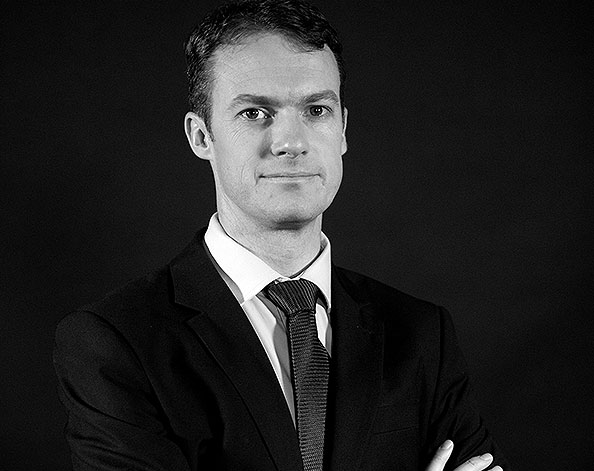Get Focus insights straight to your inbox
On Friday, Moody’s downgraded SA’s sovereign debt rating and kept the outlook at negative. It was a move that has been long anticipated by markets.
Before the downgrade, it cost more for the SA government to borrow over five years in US dollars than Brazil, a country with a worse sovereign rating than SA. Clearly, markets have been pricing for the worst (and implicitly for more downgrades to come).
Post the downgrade there are three important questions to address:
- What will be the impact on the economy?
- What will be the impact on the market?
- At what point can we expect a reversal?
Below we lay out our answers to all three questions.
What will be the impact on the economy?
At the moment the global economy is under severe strain due to the novel coronavirus and the associated lockdowns. There are market analysts expecting growth in the US in Q2 to be as low as -20%. European activity indicators are at the lowest level seen, with data back to 1999. Early estimates from the Singaporean authorities are for growth in Q1 to be -10.6%.
There is a steep global slowdown underway and SA will not escape it. SA entered the Covid-19 shutdown in recession and that is likely to materially worsen, with growth in Q2 possibly below -10%. There are conflicting views on how the downgrade will affect the economy directly but given the global situation, it is clear that the primary driver of growth in SA over the coming quarters is going to be the global economy and the ability of Eskom to provide sufficient power if/when the recovery starts rather than the downgrade itself.

It is likely to take years, before we get investment grade status back and we should only start seriously considering it once Eskom is no longer a binding constraint on SA growth.
What will be the impact on the market?
Markets have been pricing in at least one downgrade for some time. SA dollar-denominated debt trades at a relatively high yield compared to peers (SA five-year government debt denominated in US dollars closed on Friday yielding 6.48%).
SA local currency debt has been trading at near-record spreads vs emerging market (EM) peers for months. At Friday’s close, SA 10-year government debt yielded close to 12% vs less than 1% for both the US and the developed market (DM) aggregate. The SA spread over EM peers is at a 15-year high.
At what point can we expect a reversal?
History suggests that after a downgrade to sub-investment grade status, there is a brief blowout in yields. However, typically six months post a downgrade, government bond yields trade at lower spreads relative to peers than before the downgrade. Presumably, this is as a result of the reforms that the downgrade itself likely inspire.
The spike in yields is typically attributed to forced selling from index trackers. The World Government Bond Index (WGBI) is the pre-eminent local currency bond index. Now that SA has lost its last investment-grade rating, it will be removed and index trackers will be forced to sell their holdings in SA government debt.
However, in this case, we need to be careful in simply applying the pattern seen elsewhere to SA. SA has a large domestic investor base that will buy bonds at attractive yields but more importantly last week the SARB announced QE – a process to buy bonds in the market.
On average, it takes around five years for a country to regain investment-grade status.
Where there may have been R100bn worth of bonds sold into a market with few buyers, that is no longer the case. In addition, FTSE has announced that there will be a delay to the rebalancing of the WGBI: the next rebalance will be at the end of April.
SA may well have dodged the worst of the possible spike in yields due to the actions of the SARB and the decision by FTSE. In the meantime, SA government debt trades at a yield that offers much compensation for risk.
Moody’s expects SA debt to GDP to reach 90% by 2023 as a result of low growth and difficulty in controlling expenditure and they do not see an upgrade as likely to occur anytime soon. Electricity supply was stated as likely to be a binding constraint for years to come.
In addition, Moody’s explicitly stated that they believe spending on the public wage bill in 2020 will come in at above budget. On average, it takes around five years for a country to regain investment-grade status. Given the concerns about Eskom and government fiscal credibility, it does not seem reasonable at this point to be pencilling in a shorter period for SA.
Inside Out of the Ordinary: Meet the people at the heart of your wealth
Limited impact
In summary, the loss of investment-grade status has come at a time when SA is likely to be reporting extremely weak growth in any event. It had been anticipated for some time and we expect will have a limited impact on financial markets.
However, it is likely to take years, before we get investment grade status back and we should only start seriously considering it once Eskom is no longer a binding constraint on SA growth. Once SA starts picking up the pieces post the lockdown there will be much work to do to regain the support of the rating agencies and global bond investors in general.
In the meantime, SA government debt trades at yields that offer significant compensation for risk in our view.
About the author

Chris Holdsworth
Investment strategist
Chris holds an MSc (Statistics) and is a CFA. He joined Investec in 2007 as a quantitative analyst for the institutional equities team. He started covering strategy from the beginning of 2013 and headed up the research team from 2017. At the beginning of 2019, he moved to the Wealth and Investment (SA) Team as Chief Investment Strategist. He is also a member of the Global Investment Strategy Group and Chair of the Global Sector View Group.










